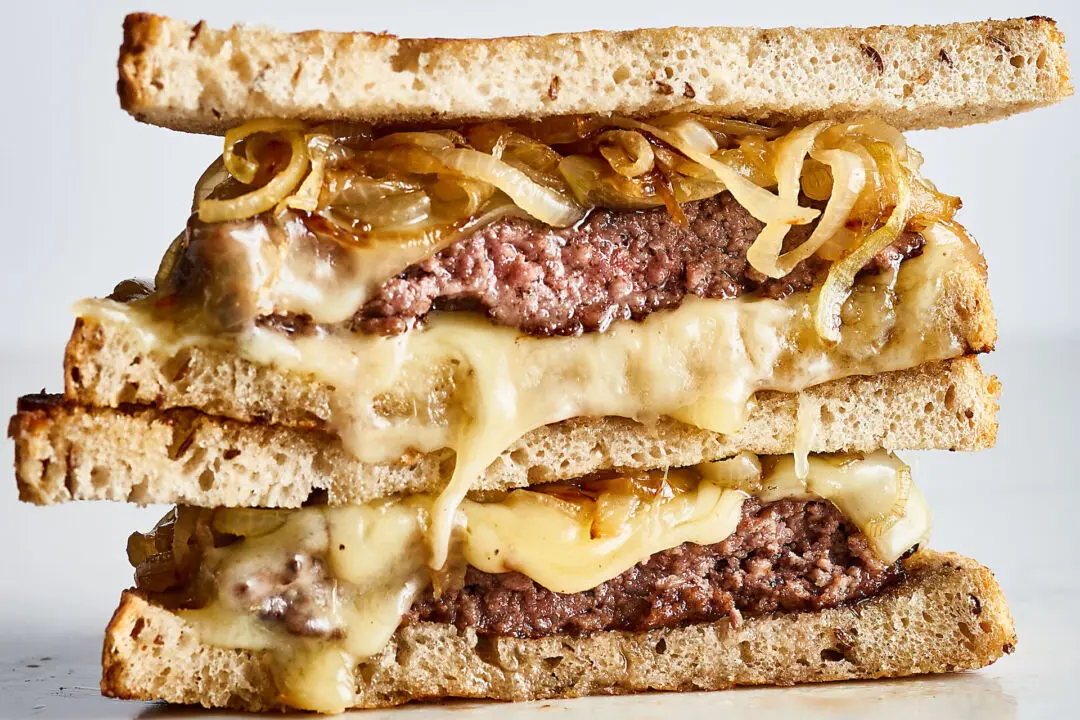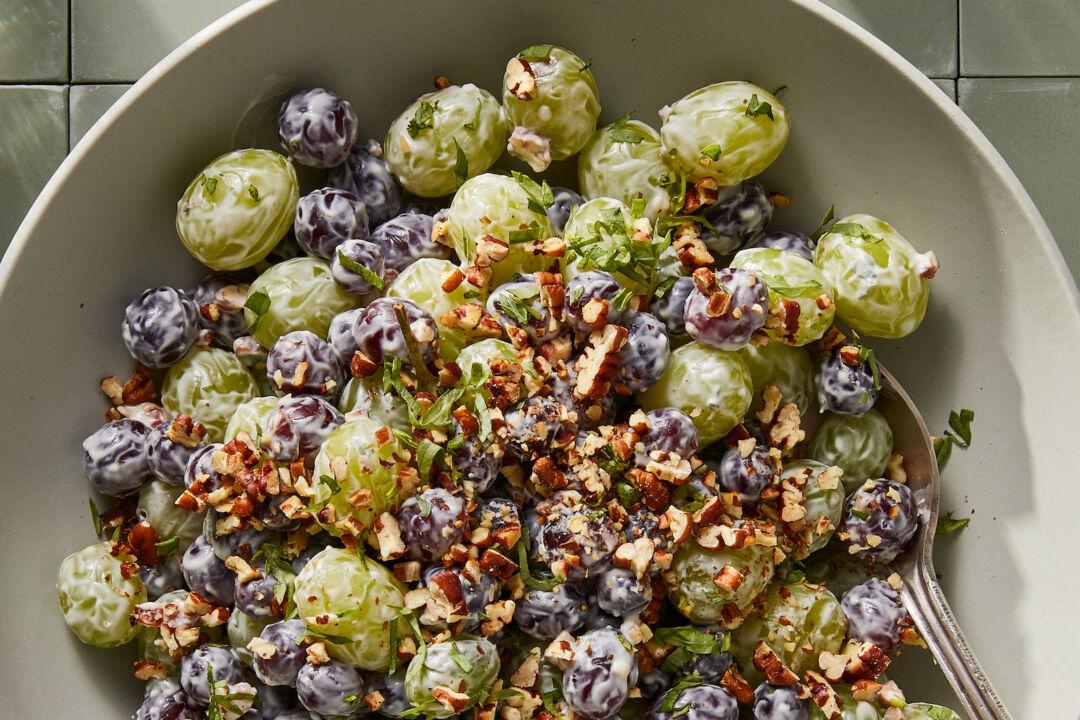Sugo all’Amatriciana (sauce Amatriciana) is a classic Roman tomato-based sauce that includes guanciale (cured pork jowl) and pecorino Romano cheese. The guanciale is cooked until crisp and the rendered fat helps create the delicious porky flavor base of the sauce. The salty pecorino Romano cheese adds flavor and creaminess.
What sets this sauce apart from some other traditional red sauces is that the tomatoes are very lightly cooked, which makes the tomato flavor lighter and fresher than a long-stewed tomato sauce.
In this recipe I stay (mostly) true to the original by keeping both ingredients and cook time minimal. I also reached out to senior contributing food editor Sheela Prakash, our resident Mediterranean expert, for advice. She told me that she had a “killer Amatriciana” at Evan Funke’s Felix Trattoria in Los Angeles. She said his version was very pork-forward and served with rigatoni. I kept that in mind when developing this recipe.
I made the recipe a few times, each time with varying amounts of guanciale. For my taste buds, the version that reigned supreme was the one with the most guanciale. Not only was the sauce delicious, but it also had the exact right amount of guanciale pieces to chew on.
What Does ‘Amatriciana’ Mean in Italian?
Amatriciana gets its name from Amatrice, the town about a two-hour drive east of Rome where this sauce originated. Original iterations of the sauce, known as pasta alla gricia, didn’t include tomato. This “white” version of Amatriciana is said to get its name from the Italian word gricio, an early Roman word for bread-makers and sellers of other basic food staples. Pasta alla gricia is also considered to be the predecessor to what we know today as carbonara. The Amatrice version of Amatriciana is served with spaghetti. When the sauce made its way to Roma, bucatini was swapped in.What’s the Difference Between Arrabiata and Amatriciana?
Arrabiata sauce and Amatriciana are both tomato-based, but otherwise they are distinct. Arrabiata doesn’t have guanciale or Pecorino Romano in it. Arrabiata is known for its signature heat, which comes from plenty of red pepper flakes.Amatriciana Essentials
The GuancialeYou can’t have Amatriciana without guanciale. The fat of the guanciale is the base of the sauce. Guanicale is cured with salt and spices, and some have more spices rubbed on the exterior than others. If possible, choose a guanciale that has a lesser amount of spices. Any guanciale will do—just know that if you have a guanciale with more spices on the exterior, those spices will season the sauce.
If you can’t find guanciale, some recipes recommend swapping in pancetta. The dish will still be delicious, but know you won’t be making true Amatriciana.
Trim the guanciale into lardons, and cook until the meat is crisp and the fat has rendered. The fat is whisked into the tomato sauce, which gives the sauce its signature porky flavor.
I call for crushed or diced canned tomatoes in this recipe, but you can also use passata. Barely cook the sauce to keep the flavors fresh and light.
Original iterations of the sauce used spaghetti. Bucatini came onto the scene after the sauce made its way to Rome. If you travel to Rome today, you’ll likely find it served with bucatini. Nowadays, rigatoni is also frequently used.
A Little Something Extra
True Amatriciana doesn’t include garlic or oregano, but in this recipe, I add a couple cloves of crushed garlic and a large sprig of marjoram to add another layer of gentle flavor to the sauce. I crush, gently simmer, and then remove the aromatics so they don’t overpower the sauce. You can sub the marjoram with oregano or you can omit the garlic and marjoram altogether.Bucatini All'Amatriciana
Serves 4 to 6- Kosher salt
- 1 pound dried bucatini or rigatoni pasta
- 2 cloves garlic (optional)
- 3 ounces pecorino Romano cheese
- 8 ounces unsliced guanciale, preferably unseasoned
- 1 tablespoon olive oil
- 1 (28-ounce) can crushed tomatoes, tomato puree, or passata (about 3 cups)
- 1 (about 4-inch) sprig fresh marjoram or oregano
- 1/2 teaspoon red pepper flakes, plus more for serving
Crush the garlic cloves, if using, and discard the peels. Finely grate the pecorino Romano cheese on the smallest holes of the box grater (about 1 1/4 cups). Using a sharp knife, cut the guanciale into 1/4-inch thick matchsticks that are about 1 inch long. Line a plate with paper towels.
Heat the olive oil in a large 12-inch high-sided skillet over medium heat until shimmering. Add the guanciale and cook, stirring often, until golden brown and crisp all over, 6 to 8 minutes. Transfer the guanciale to the prepared plate with a slotted spoon.
Add the dried bucatini or rigatoni to the boiling water and cook according to package directions until al dente, 8 to 12 minutes.
Return the skillet with the guanciale fat to low heat. Slowly add the crushed or pureed tomatoes or passata. Be careful; it may bubble and sputter. Add the garlic cloves, fresh marjoram or oregano sprig, and 1/2 teaspoon red pepper flakes.
Increase the heat to medium and bring to a bare simmer, stirring vigorously to combine. Simmer until the flavors meld but the tomatoes do not reduce much, 8 to 10 minutes. If the pasta is not ready, turn off the heat.
Remove and discard the garlic cloves and herb sprig. Reserve 1/4 cup of the cooked guanciale and 1/4 cup of the cheese for garnish. Add the remaining guanciale and cheese to the sauce and stir to combine.
When the pasta is ready, use tongs to transfer the pasta into the skillet. Toss, over low heat, until the pasta is well coated with sauce, adding the pasta water 1 tablespoon at a time as needed to make it saucy (2 to 4 tablespoons). Serve topped with the reserved guanciale, cheese, and more red pepper flakes if desired.





